The Japanese are still one of the oldest people in the world.A look at their diet shows why we can take advantage of it.
If we want to lose weight, we often start with strict diets, which are not followed after a few days or weeks for all strict rules.It's actually so simple: let's look at the oldest people - in Japan.
There they treat food with respect and enjoy it.
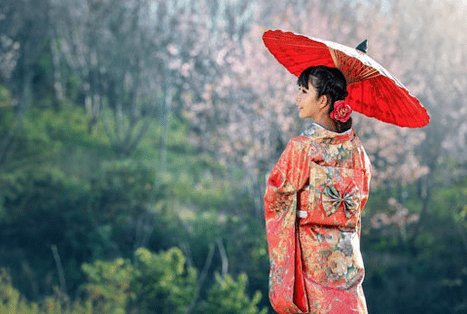
Japanese diet
Traveling to Japan.The choice of products
Very muchsquirrel: The main ingredients of the Japanese diet are fish, rice and vegetables.As well as soy and fruits.
In a more careful consideration, it is like
- rich in protein,
- low -fat
- And the gluten -free diet.
- FishContains many omega-3 fatty acids that are useful.
- VegetablesThey contain the necessary vitamins and fill the stomach well.
- Do not be afraid of carbohydrates: at first glance it seems that with ubiquitous carbohydrate phobia, an incredible amount of white rice is eaten in Japan.Obviously, this is not very harmful to the disadvantages.RiceIt does not contain gluten and contains little fat.
- Soupand fermented dairy products.That they hardly eat in Japan isdairyS
- ThoughcerealSometimes they are used, for example, in the form of pasta, they are not the main food product.
- MeatThey eat much less than fish.
- But the Japanese asEnzymeLike miso or kimchi.They contain probiotics that are useful to the intestine.This, in turn, plays a big role in weight loss.And something else we can adopt from the Japanese: they eat a lot of soup even for breakfast.
Traveling to Japan.Cooking methods
In Japan, the food is mainly suffocated, suffocated or grilled.All these types of preparation are made almost without fat.
Of course, there is also fried food, for example, a popular pace, but then used as a side dish only in small quantities.In Japan, the presentation and design of the dish are also important.Asian products are useful, delicious and contribute to weight loss.
Of Japanese, to eat consciously
In Japan, food is considered an independent action that you need to concentrate on.Food should be eaten slowly and consciously and enjoy it.Therefore, it is traditionally not eaten "by the way" or "going".That is, neither during a walk, nor on the subway, nor at work, nor when watching a TV.Of course, this is not forbidden, but in fact, a diet, especially when weight loss, should be conscious.With this method of digestion of food one feels a feeling of satiety.Since working days and school days in Japan can be very long, it also means that there are longer holidays for food.AlsopartsLess in Japan.You will not see a dish overloaded with food.
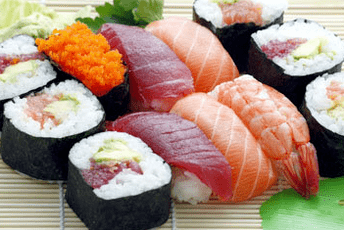
Weight comes with fast food
Slow food (slow food)In Japan in trend.If you imitate this, you can lose weight intentionally, not starve.However, it should be noted that in Japan more and more emerge from the west of new trends: fast food, for example.Previous food habits disappear ...
This has consequences: the Japanese also recover when they say goodbye to their traditional food!Nevertheless, the country also struggles with this, Japan in 2009 has taken decisive measures against the reasons for being overweight.Medical tests are regularly conducted in all municipalities and large companies.Companies have to pay more for medical insurance if their employees are overweight or have high blood pressure, high blood lipids or increased blood sugar.In view of such measures, many Japanese prefer to return to the Miso-Supe with fish instead of burning in the morning.
How long does the Japanese diet last?
Time and possible weight loss can vary.The Japanese diet should be observed at least four weeks.This time is enough to stimulate fat burning.There are people who have lost from3yes8Pound in four weeks with a diet.The result can be increased even more if you start a sports program.
- Many vegetables and fiber are used during the diet.The diet plan provides1200 caloriesa day.
- Mostly rice, fish and vegetables are available.
- Drinks: lots of green tea and water.
- Take care of fresh cooking - no finished products.
- Take a sports or train for durability.
- Plan enough cooking time.
Consult a doctor.- Any changes to the diet can lead to diseases.The reasons are mainly mental in nature due to low calorie consumption.Consult a doctor if the symptoms are preserved.
Advantages of the Japanese diet
Japanese diet- This is a healthy mixed diet.Much attention is paid to fresh products and a balanced composition of dishes.
The disadvantages of the Japanese diet
- Low calorie consumption can cause hunger and malaise.For overweight people, the overall calorie consumption can be even too low.
- Cooking fresh dishes can be annoying in the long run for those who are used to feeding fast food.
- Spontaneous visits to a cafe or restaurants with friends are confronted with a choice.
- The diet requires a lot of durability.
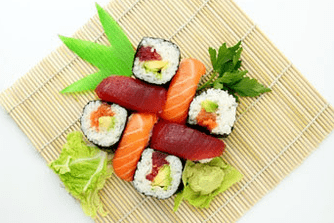
But those who successfully complete the Japanese diet will be rewarded with greater weight loss.
If you want to see great successes, make a sports program.Be sure to consume enough protein.Otherwise you cannot increase muscle mass.In the least case, you will lose your muscles.Evil sports and other large loads should be avoided.
A Japanese diet.Menu
All food should be fresh.The dishes are beautifully prepared, you can play with flowers.Food and enjoyment of food (slow absorption of food) are also very important.
Breakfast
- 1 mandarin
- 1 cup miso.This typical Japanese soup gives a lot of energy but has low fat.By the way, it consists of fish broth, tofu, algae, miso (flavored soy paste) and green onions.The recipe below!
- 1 cup of green tea
Dinner
- 1 plate of land (raw fish with rice), with soy sauce
- Mushroom
- 1 apple
- A glass of green tea
Dinner
- 1 serving of sashimi (a dish of other fish), soy sauce and bazes (be careful, this paste made of water is very sharp)
- 1 cup whole grain rice
- 1 orange
- A glass of green tea
In addition, exercise (walking or cycling) is recommended, as well as the pleasure of simple, small things.
And now for "good old days" - let's take a trip in time, in 1975.
The Japanese are one of the most healthy people in the world with the largest life expectancy, during which they remain harmful as a result of exemplary nutrition.Nippon.com is currently publishing a study that justifies the reasons for the good health of the Japanese with their nutrition.Nutritionists have studied the eating habits of the Japanese for more than half a century.Result:In 1975, Japanese culinary habits were rated by the highest ratings.
Why the 1975 Japanese diet was considered a diet model
For many decades, Japanese culture has been influenced by the Western world, in particular the Western habits of power spread in the country, and have also brought with them such diseases as atherosclerosis and diabetes.The study in which the Japanese diet on mice has been tested for several decades - in 2005, 1990, 1975 and 1960.
Result:The mice had the best health with a dietary plan in Japan since 1975. This group of mice had the worst risk of diabetes and a healthy liver.
Reason:The average Japanese diet plan contained a large share of vegetables, fruits, algae and seafood during this particular year.In addition, in 1975, the diet was prevalent by various methods of fermented spices and a larger variety of herbs.In addition, the consumption of juices and sugary soft drinks at that time in Japan was not as common as today - both drinks were considered harmful to health in large quantities.
After the 48-week period, researchers found that mice, which have been fed by the Japanese diet since 1975, are older and have better memory than mice, observing the 2005 diet.
But is it possible to convey these results to people?A study conducted by the University of Studies of the University of Tohoki in Sendai, Japan, the "Der Tōhoku Uni, Sendai Research Committee, has proved that the 1975 diet has the same beneficial effect on the people in the first.A group of cholesterol is a lower, as well as the risk of diabetes.
Summarizing, we can say thatThe power of Japanese 1975.Compared to modern diet in Japan - and typical of the West, today eating habits are more useful in many ways.This healthier lifestyle and diet reduces the risk of diabetes, cholesterol in the long run, reduces blood lipids and visceral fat, weight loss is a positive side effect.
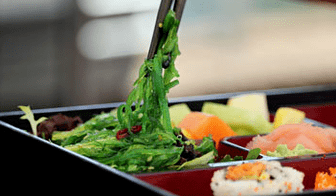
The 1975 diet, along with regular exercise, contributes to weight loss.
- Variety:The daily menu usually consists of very small different dishes, which are served with soup and rice - instead of a large main course.
- Preparation:The most popular three types of dishes that were prepared in 1975 were cooked, steam or raw, also grilled.Freedom heat and baking are used less often.This form of preparation is due to the fact that the most important nutritional values are lost in the heat.For example, oily fish, such as COD, contains important omega-3 fatty acids.After frying, the fish contains only one third of the original fats compared to the raw fish, such as Sashim.
- Ingredients:The 1975 diet is especially rich in soy products, seafood, tubers and green and yellow vegetables (including RNICONS), fruits, algae, mushrooms and green tea.Eggs, dairy products and meat are also consumed in 1975, but only in moderation.
- Spices:Instead of salt and sugar for taste, soy sauce, vinegar and sake, fermented spices and fish broth are used.
Miso soup- This is a Japanese national dish, quickly prepared and very fragrant.The main recipe contains very few ingredients - you can enrich it as you wish.Miso-sup is often eaten for breakfast in Japan, but also as a breakfast or garnish.With the filling, the soup becomes the main course.
You will only need two ingredients as a soup base:
Mizopasta:This spicy paste consists of soy and - depending on the variety - of different cereals, such as rice or barley.The ingredients are salted and fermented in barrels using the so -called Coji form.There are light and dark, sweet and sharp miso pastes.In this way, the choice of variety has a great effect on the taste of miso soup.Mizopasta is considered very useful as it contains probiotic dairy bacteria formed during fermentation.Dasha:The Japanese fish broth is prepared from combat combat combat algae and dried bonito flakes (a type of mackerel or tuna: "Katsuo-Bushi"-"Katsuo-Busi").If you want to cook miso vegetarian soup, you can use dried shiitak and possibly mushrooms from Maitaka or Enoki instead of Bonito Flakes.
Miso soup: Main recipe
For four small portions of the miso soup you will need the following ingredients:
- 750 milliliters of Dasha
- About two or three tablespoons of miso paste
Use miso-post of your choice: In addition to soy, Shiro-Miso also contains rice and has a very soft and sweet taste.Darkened Miso varieties, such as Genmai or Hatcho Miso, are more spicy.
How to cook miso soup
-
Heat Dasha's broth - but don't cook.
-
Skip the missing pass through the sieve and mix well with the broth.First, use only part of the quantity as Paste Miso has a very salty taste.Try soup and then add more to miso pastes if necessary.
-
Add the ingredients of your choice in the wrong step after a few minutes before serving.Serve the finished soup in cups.By the way, in Japan, the soup is eaten with food sticks, and then the broth is drunk from the glass.
Misso soup recipe: additives and spices
You can prepare different ingredients for your soup.In Japan, a lot of attention is paid to the fact that the ingredients are cut evenly - so the finished soup looks very beautiful.Here are some examples of enriching your miso soup:
- Boiled rice or paste (eg buckwheat noodles)
- Tofu
- Onions or green onions cut into thin rings
- Mushrooms, finely chopped
- Kohlrabi, finely cut
- Snow sections
- Leaf spinach, Park Choi or Mangold
- Fried vegetables such as broccoli, black pepper or carrots
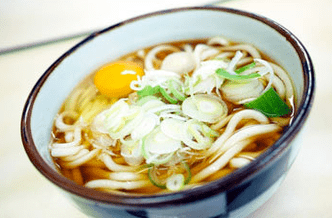
Although the Misso soup is very sharp in itself, it can be seasoned with several spices.For example:
- soy sauce
- A bit like lime
- Japanese sauce from vastshire
- A few drops of sesame oil
- A little ginger powder and / or chilli pepper.
- You can also cut fresh ginger and / or black pepper into thin slices and leave in soup.
Advice:For many ingredients you will need to go to an Asian store, but in the regional markets you can buy fresh onions, mushrooms, kohlraby and CO.
Tofu and other soy products are now manufactured in other countries.
JapaneseEat:
- rice, fish (raw and cooked), vegetables, all and algae
- Small portions
- different foods (up to 30 different per day)
- For breakfast soup, fish, rice, vegetables
- Fresh seasonal raw products
You almost don't eat desserts don't eat bread
Drink mainly green tea
Not fried in oil, use only a little vegetable butter for frying
They go a lot and go on a bicycle
The best three products
Rice/fish (algae)/soy (tofu)
Drink: green tea
And another secret of Japanese
Do you want to become more thin in the waist of 12 cm?- If so, do the following breathing exercises!
Important!
- Perform daily!
- Perform yourself before breakfast!
- Never rush!
- The legs are placed at a convenient distance.The knees, of course, "look" forward.
- Move the weight of the body to the hind leg, stand up the front.
- Inhale for 3 seconds.
- Exhale for 7 seconds.Relax your muscles.Tear your hands.
Exercise perform at the beginning of 3 minutes, then increase the time to 10 minutes.













































































